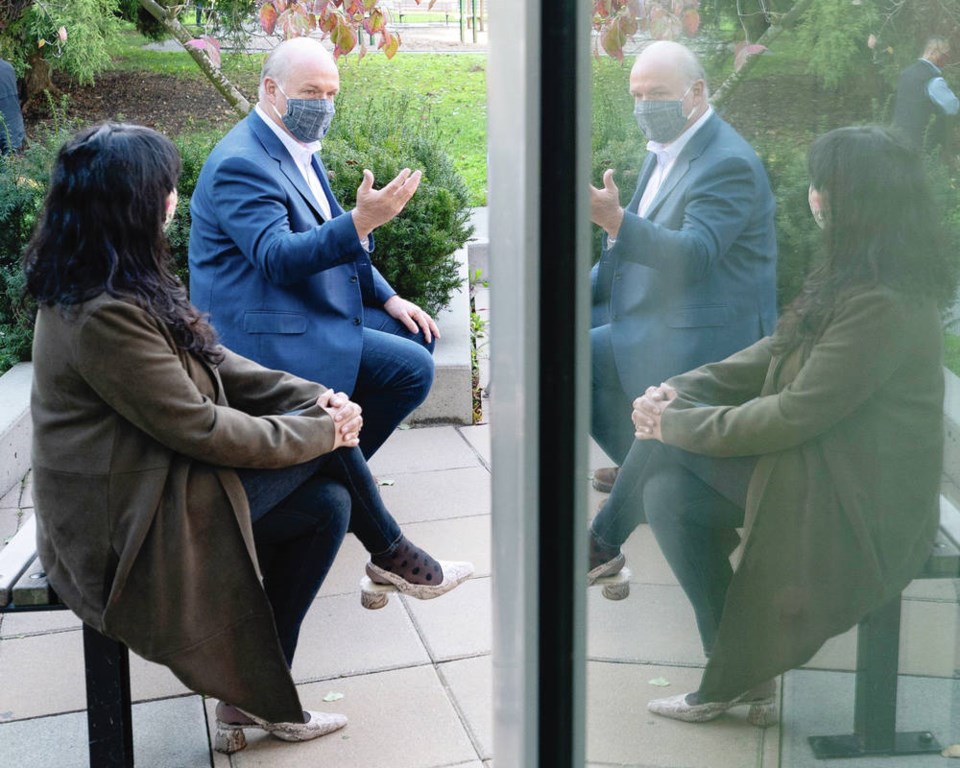The province needs to move to a public system of long-term care homes, NDP Leader John Horgan said Wednesday, rattling private operators about the future of the industry.
“I believe we need to transition to a fully public system,” Horgan said during in a campaign stop in Richmond. “But we won’t be doing that overnight.”
Horgan said the mixed system is not meeting B.C.’s needs and that the NDP will focus on expanding public health care.
B.C. has about 27,000 to 28,000 long-term care beds — a mix of government-owned-and-operated, not-for-profit, and for-profit, with roughly equal numbers of each.
For now, Horgan said, the private facilities are still needed.
“We need to make sure services are there for people. We believe the best way to do that is through the public system,” he said.
“That’s going to be our focus. But I’m not going to eliminate facilities just because it’s an ideological purpose. That’s not our way. That’s not how we roll.”
Terry Lake, CEO of the B.C. Care Providers’ Association, said he was initially “alarmed” Wednesday when he heard the NDP leader’s statement.
“Because this is certainly not what he has indicated in the past, nor what Health Minister Adrian Dix has indicated,” said Lake, a former Liberal health minister. “They’ve talked about the mix in B.C. being maintained.”
The B.C. Care Providers’ Association represents both not-for-profit and for-profit seniors care homes.
The system has worked well — particularly in comparison to Quebec or Ontario, for instance, Lake said.
COVID-19 infections in long-term care homes in Ontario and Quebec are four times and seven times higher, respectively, than in B.C.
“So it was, you know, surprising and a bit startling, and I can honestly say it caused a lot of concern in the sector,” Lake said.
He said he would like clarification from the NDP on its plans.
“You can imagine that if you are in the sector, if you are a family-owned business that’s been in this sector for decades, this would shake you to your core, if you thought that the NDP government were going to take over provision of long-term care from your family-owned and -operated business,” he said.
Lake said beyond the impact phasing out private seniors homes would have on private-sector businesses and on residents, many people’s Registered Retirement Savings Plans and a lot of public employee pension plans are invested in long-term care businesses.
“And so … a kind of statement, indicating any kind of move away from private long-term care services, has ramifications that I don’t think people consider.”
The B.C. Government and Service Employees’ Union has called for an end to for-profit seniors care and launched a petition prior to the election advocating for a move to a non-profit, publicly delivered system.
The union has linked increased privatization to lower wages, poorer working conditions and worse care for seniors.
Liberal Leader Andrew Wilkinson supports a mixed system, while Green Party Leader Sonia Furstenau has said the care-home sector needs to shift away from the for-profit model to a high-quality mix of public, non-profit and community-based care, including co-operatives.
“Our seniors are not a commodity that should be earning some investor profit,” she said.
ceharnett@timescolonist.com



